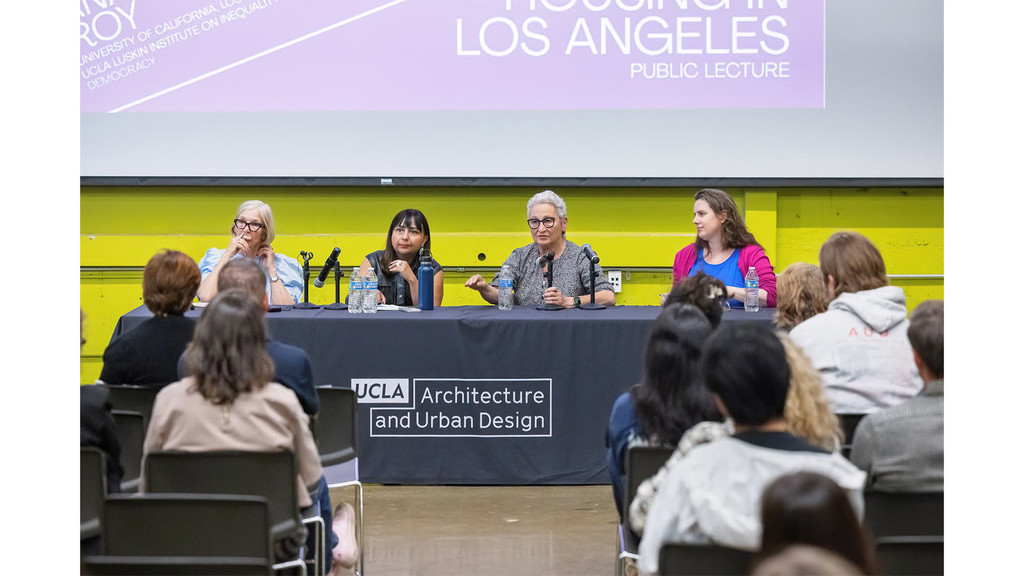
Two tales of a city: October 20 discussion gets at how housing policy and architecture can counteract each other – and how we can untangle this paradox
Oct 30, 2025
A Beverly Hills mansion whose owner seems, by all accounts, to be a dog named Gunther.
An apartment mailbox rejected for being too far from the curb–even if that distance is shorter than what you’d find at almost any single-family home.
These are a few of the anecdotes that surfaced at the UCLA Department of Architecture and Urban Design’s (UCLA AUD) October 20 panel discussion, “Architecture and the Right to Housing.” Through examples like these, presenters illuminated how policy and design can operate in isolation from each other, ironically entrenching the very cycles of housing displacement and insecurity that policymakers and designers are trying to mitigate.
The discussion was the sixth and final event in an international series “Architecture and the Right to Housing,” organized by the Architecture and Housing Justice Lab at the University of Toronto’s John H. Daniels Faculty of Architecture, Landscape, and Design, and led by the Lab’s director Karen Kubey. The October 20 UCLA AUD edition was co-organized by UCLA cityLAB and its founding director, UCLA AUD Distinguished Professor Dana Cuff.
At the October 20 event, Kubey and Cuff moderated a conversation with Ananya Roy, Professor of Urban Planning, Social Welfare, and Geography and The Meyer and Renee Luskin Chair in Inequality and Democracy at UCLA, and Julie Eizenberg (MArch ‘81), founding partner of the Los Angeles architecture firm KoningEizenberg. The four participants shared a common interest: encourage greater mutual understanding between policymakers and designers and identify opportunities to untangle structural knots, in pursuit of building more units, broadening access to that new housing, and advancing housing security writ large.


Roy and Eizenberg offered policy-minded and architectural perspectives, respectively, on how they’ve each developed housing models or projects in the face of structural constraints.
Roy’s overview highlighted the liquid and opaque nature of home ownership in L.A. and elsewhere, and how this systemic challenge–one that is by-design, not incidental–enables or deepens housing vulnerability, keeping much of the public trapped in cycles of displacement and scarcity.
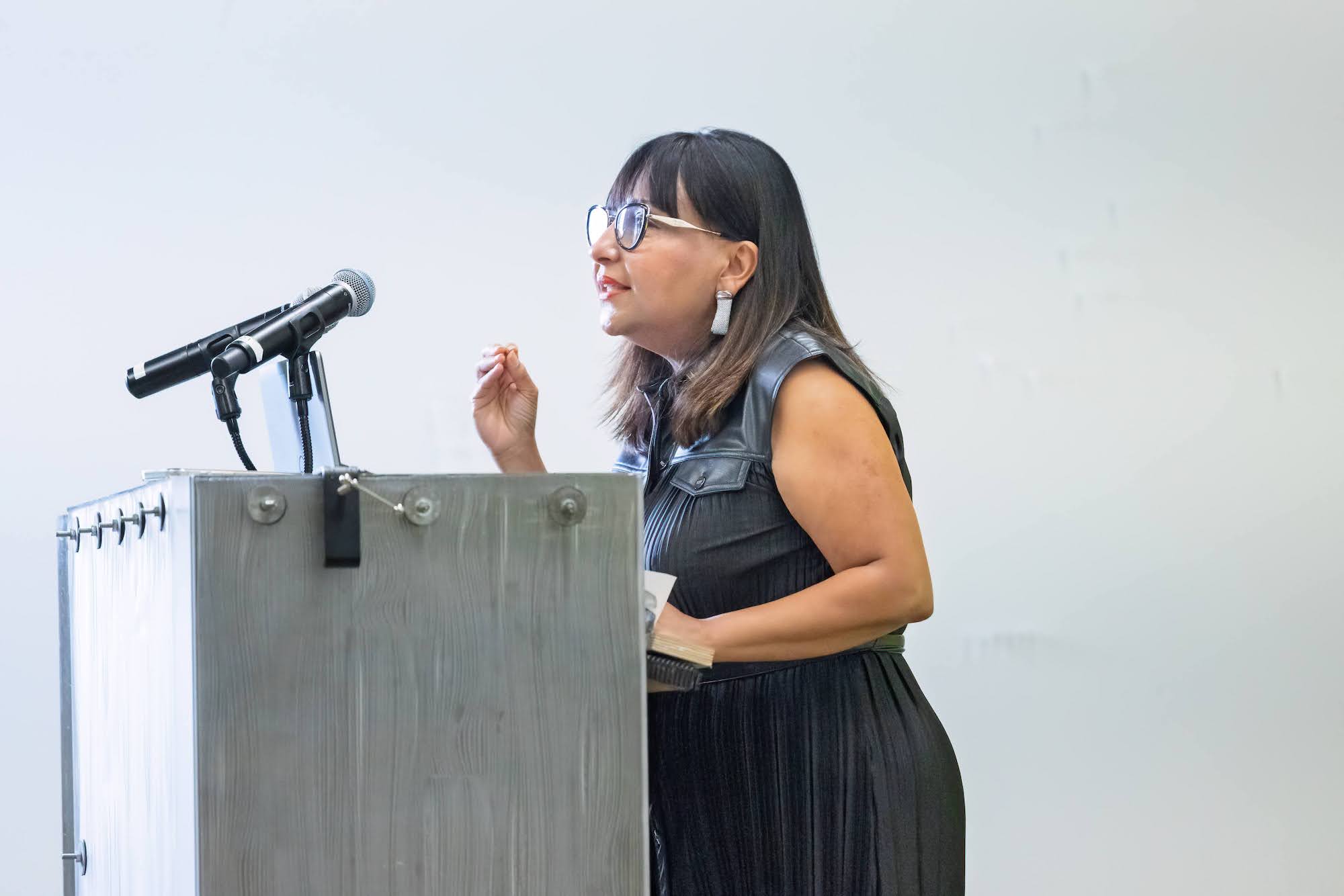
Roy observed how housing resources like vouchers have expanded in L.A. and L.A. County, while programs like Project Roomkey have promised relief and safety to unhoused and other vulnerable populations. Project Roomkey was established in March 2020 as part of the state response to the COVID-19 pandemic, securing rooms in hotels and motels for people experiencing homelessness.
However, Roy continued, these increases in housing resources have correlated with increases in housing displacement and insecurity: actual housing availability and conditions across these programs remain poor, and homelessness has persisted at scale.
“The right to housing has been weaponized,” Roy observed. “The system remains housing-resistant.”
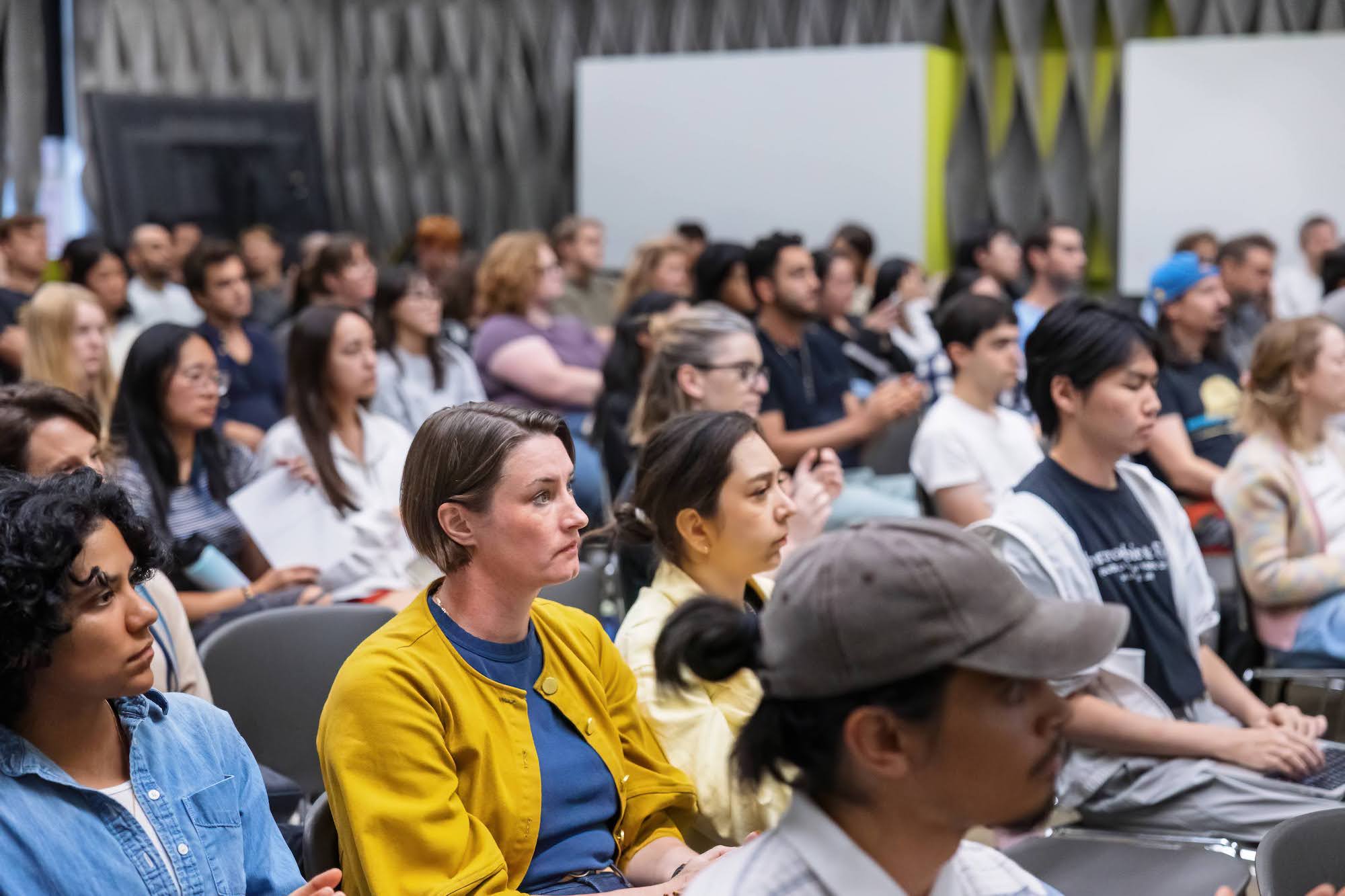

Eizenberg expanded on this idea, noting, “There’s a disconnect between the supply of housing, and getting people into that housing.” She also offered concrete examples of how, in several of her firm’s projects, well-intentioned policies have chipped away at the design’s core intent of providing stable, dignified housing.
Each of the two housing projects she discussed faced absurd code-based rejections. For Flor Lofts, a 99-unit supportive housing project on L.A.’s Skid Row, she and her team spent months in deliberations before getting permission to plant four small trees on the sidewalk. For SMV, the complex's mailbox was rejected for being too far from the curb—despite being closer than mailboxes typically are in single-family homes across L.A., as Eizenberg noted.
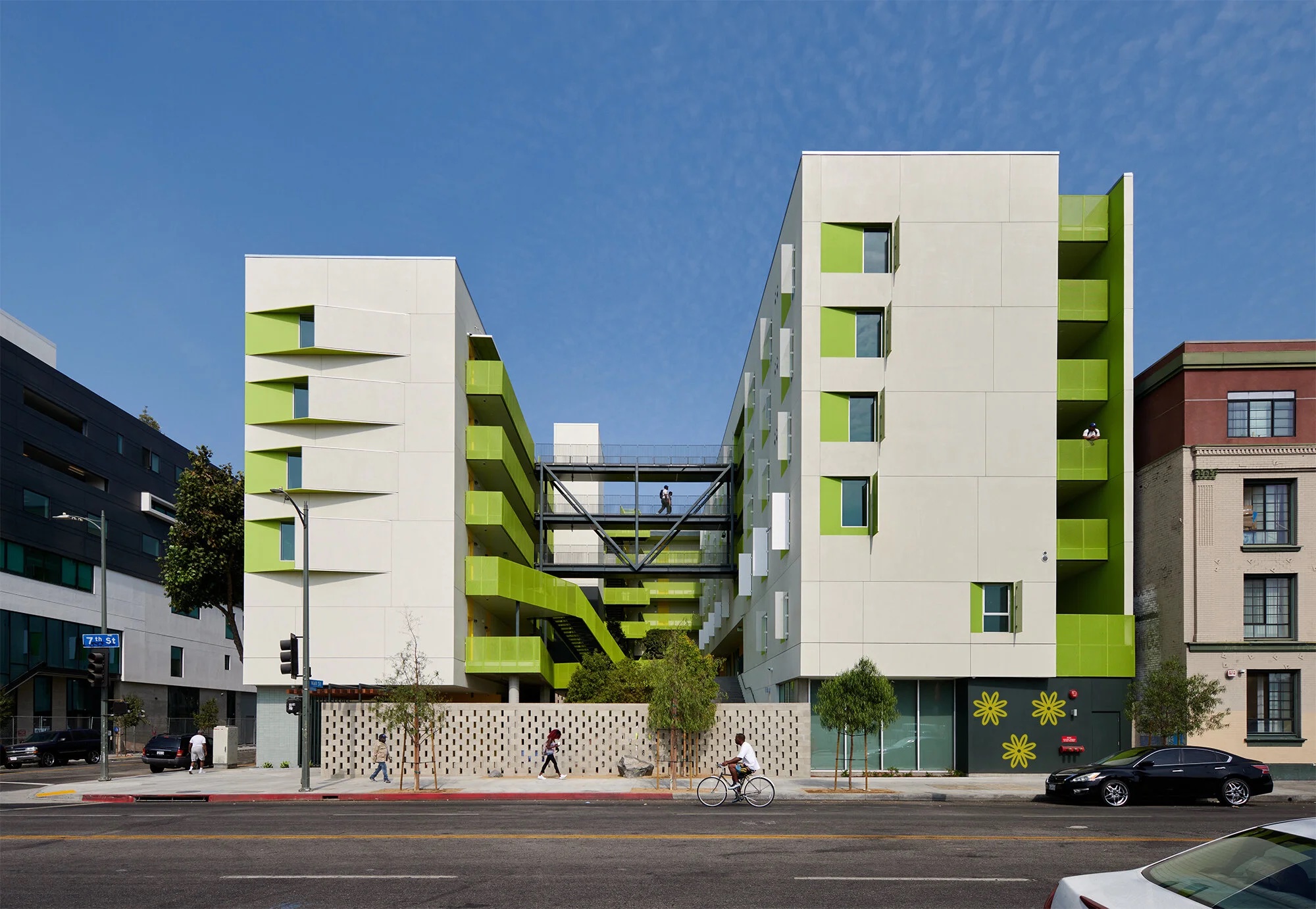
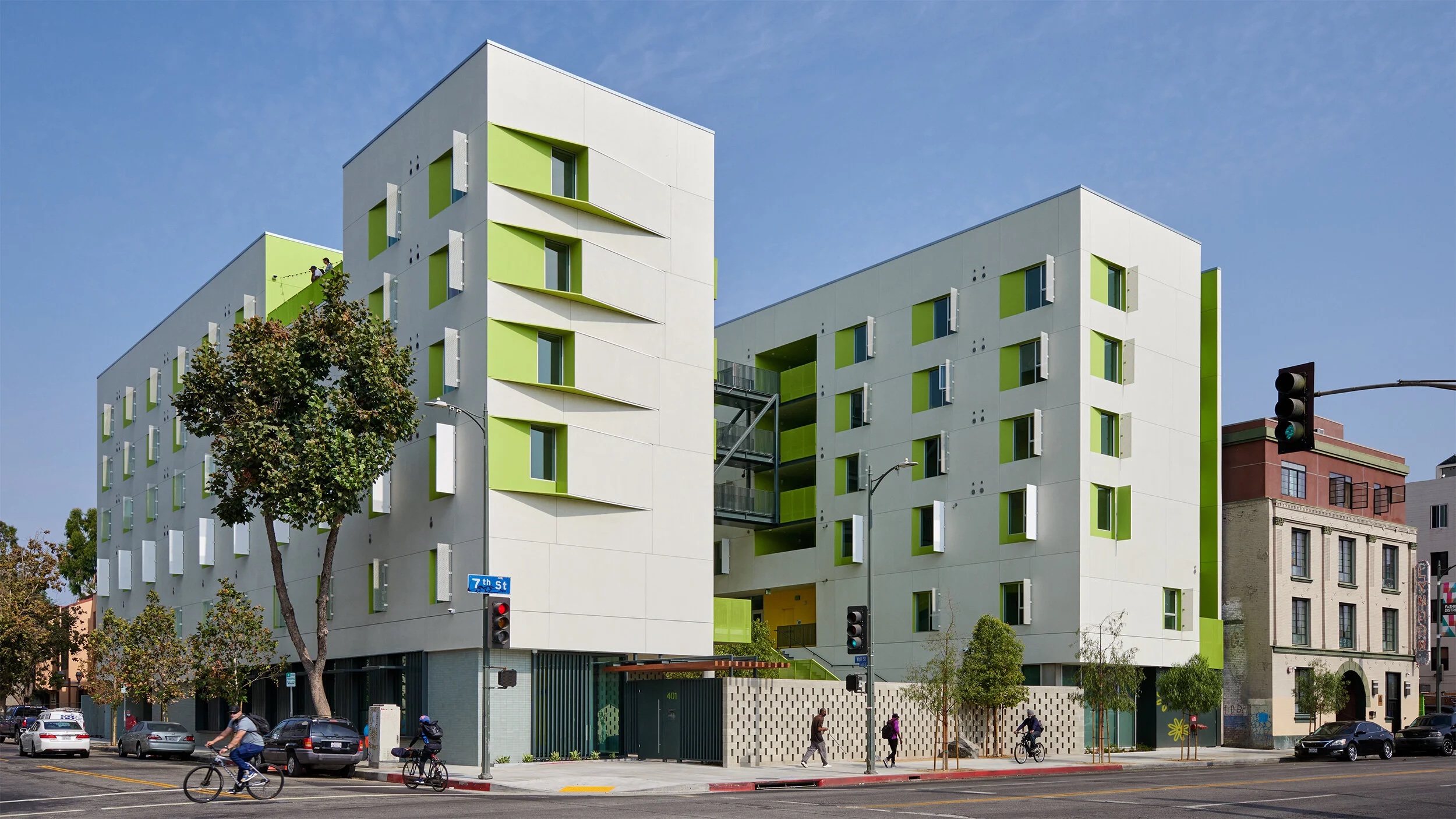
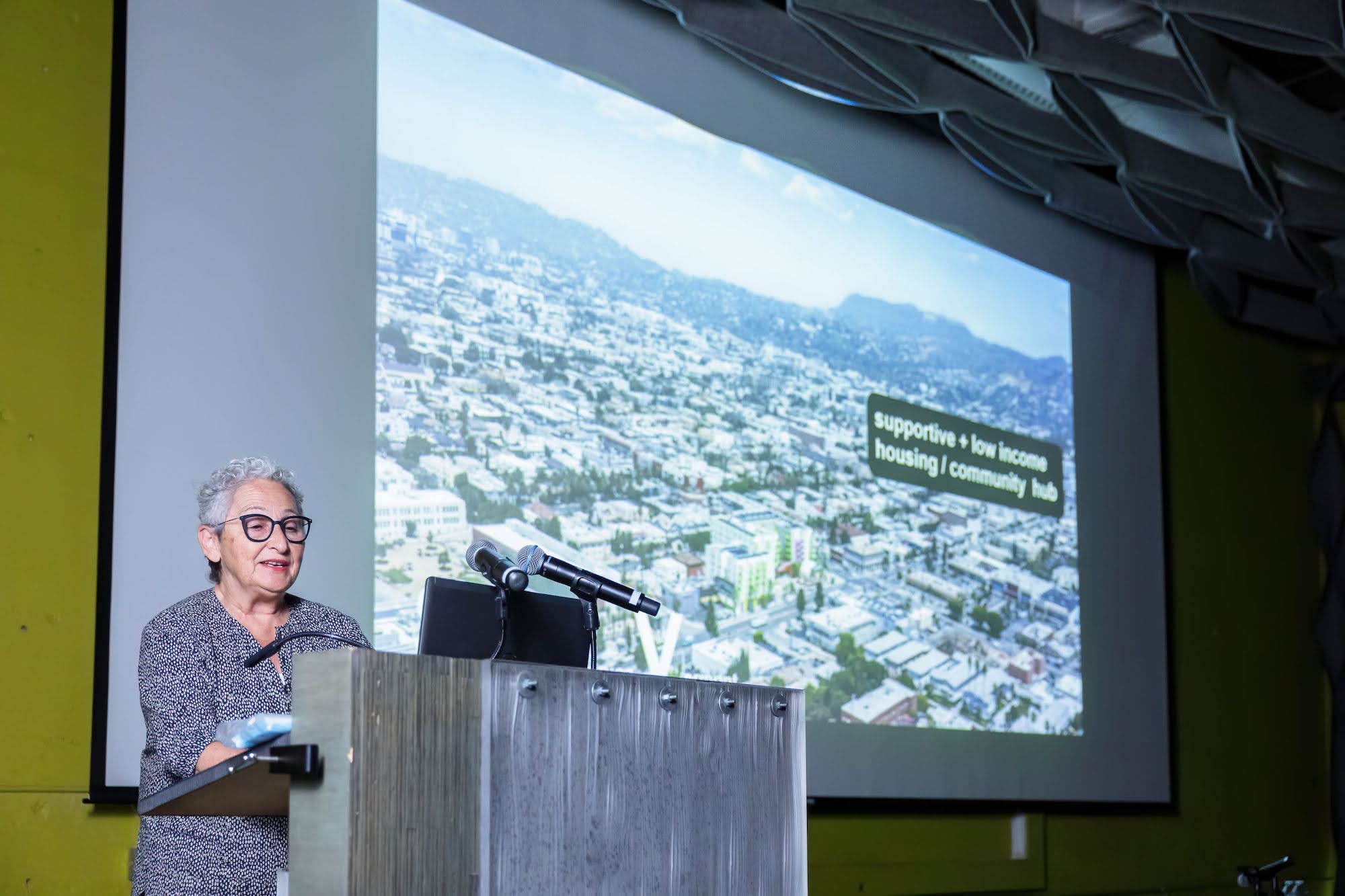
Eizenberg persisted through each of these obstacles because she believed these elements—the trees, the mailbox—were not trivial details, but essential to creating stable, dignified housing. Her struggles exemplify how systemic pressures and policies can undermine the very housing security they claim to support.
KoningEizenberg’s Santa Monica Vermont Apts (SMV), a 147-unit mixed-use affordable housing project designed in conjunction with LA Metro, opened in 2025, a full 26 years after the nearby Vermont/Santa Monica LA Metro station opened with promise of stimulating development of a vibrant community hub. Instead, a wide swath of Metro-owned land, in an otherwise dense section of East Hollywood, remained largely vacant until SMV populated it with housing and retail.
As Roy observed, that 26-year gap represents an entire generation of waiting–the sort of delay that mirrors L.A.’s ongoing homelessness crisis. Metro’s ownership of this land–and its decades of underuse–reveals how property ownership does not guarantee effective development or public benefit.
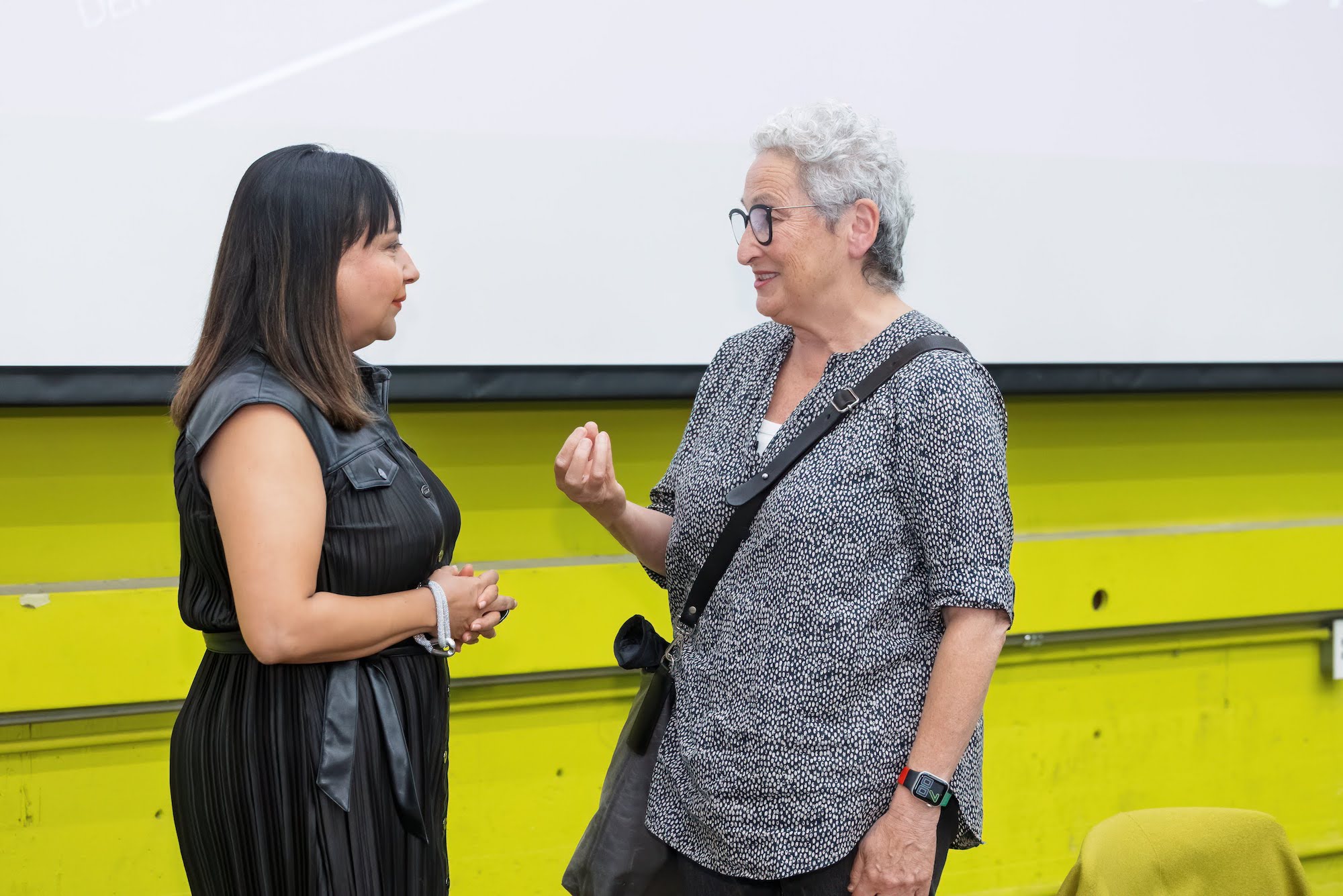
Eizenberg also championed resisting the templatization and over-standardization that many housing projects today rely on. The building industry has become increasingly risk-averse, she noted, and the scramble for budget and speed often compromises features that would improve resident quality of life
Eizenberg’s solution: architects must experiment, challenge codes, and resist the formulaic.
“Craft is not trivial,” she noted. “It sends a subliminal message of care.”

As Roy noted, projects like Eizenberg’s are often dismissed as “too expensive,” while government programs spend nearly $100,000 per bed per year on motel rooms for the unhoused–temporary housing that offers far less stability and dignity.
Eizenberg and Roy each pointed to the power of incremental change in shifting structural dynamics. Each housing project completed by KoningEizenberg might not demonstrate sweeping, visible change, Eizenberg said, but each project does generate new insights and shifts in perspective.
The October 20 event punctuated a series of recent housing research and strategies out of Cuff’s UCLA cityLAB, which marks its 20th anniversary next year. This past March, cityLAB launched “Small Lots, Big Impacts,” a first-of-its-kind initiative to turn vacant small lots across LA into new homes. Cuff and her team have also co-authored state bills to create housing for educators across California [AB2295] and so-called “backyard homes” or “accessory dwelling units” [AB2299]. This November, cityLAB will showcase a range of prefabricated homes meant to offer Eaton Fire survivors affordable, expedient solutions for recovery.
“In housing, it's difficult to bridge Julie Eizenberg's story about getting the mailbox in the right place, and Ananya Roy's description of unhoused people getting shuffled through public programs that never live up to their promise,” Cuff says. “But we architects must consider this full spectrum if we're going to move the needle and advance housing as a human right. At UCLA cityLAB, we think the best place to begin is in dialogue, like this convening, where ethically-driven, divergent perspectives come into contact.”
Getting that mailbox approved made her happy, Eizenberg said, because it made residents happy–“and that’s part of our job.”
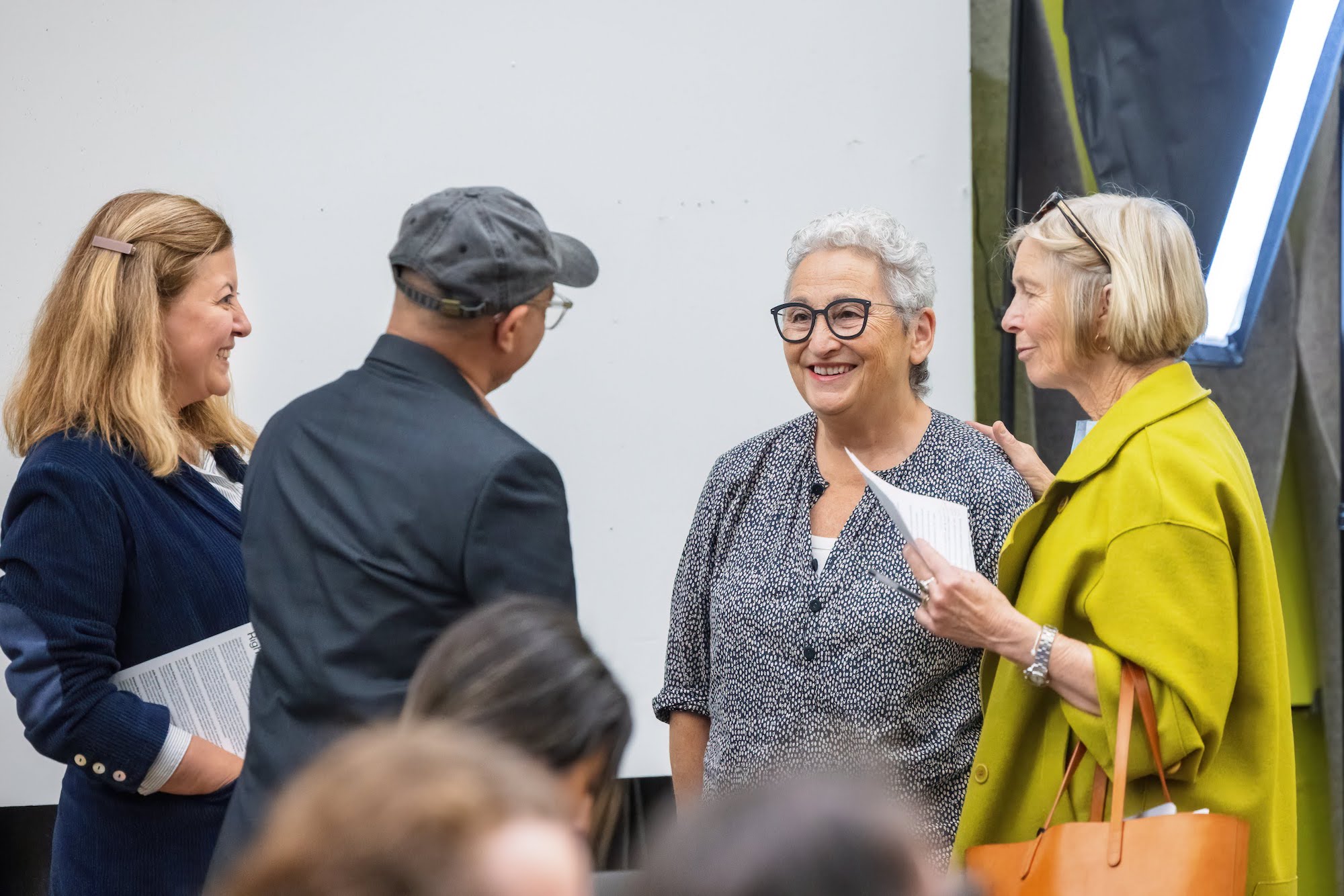
Related Faculty |
Dana Cuff |